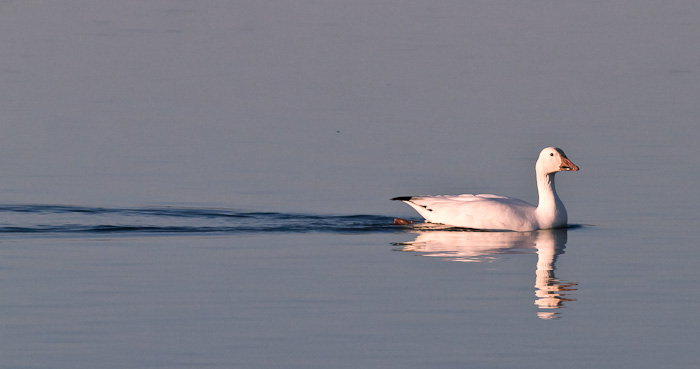Friday, December 31, 2010 - LoW-HI RV Ranch, Deming NM
< previous day | archives | next day >

Snow Goose, Bosque del Apache National Wildlife Refuge, San Antonio NM, February 4, 2010
Only twenty thousand pictures to sort
Ha! I was so busy playing with the new Canon EOS 7D 18 MP CMOS Digital SLR Camera with 3-inch LCD and 28-135mm f/3.5-5.6 IS USM Standard Zoom Lens I bought from Amazon last January I didn't take the time to organize the thousands of pictures I was taking. Big mistake.
I was staying at the Bosque Birdwatchers RV Park and spent at lot of time at the nearby Bosque Del Apache National Wildlife Refuge experimenting and practicing panning on birds in flight in High Speed Continuous mode to see if I could get some decent shots of birds in flight. I was doing this hand held and trying to teach my body to swing smoothly enough to get pictures that were reasonably sharp. That takes some practice and at 8 shots a second adds up to a lot of pictures.
At the time I didn't do much more than give them a quick look to see what I was getting - often nothing worth keeping - before moving on to the next shoot. I didn't even take the time to delete the obvious clunkers.
So here I sit, throwing away tons of junk and stumbling on a few keepers like this one.
Night camp
Site 8 - LoW-HI RV Ranch, Deming NM
- This is a spacious 65 site campground with most sites offering full hookups.
- Locate LoW-HI RV Ranch on my Night Camps map
- Verizon cell phone - strong signal
- Verizon Broadband - strong signal but often slow
- Check the weather in Deming NM
Life is Strange
Life is infinitely stranger than anything which the mind of man could invent. We would not dare to conceive the things which are really mere commonplaces of existence. If we could fly out of that window hand in hand, hover over this great city, gently remove the roofs, and peep in at the queer things which are going on, the strange coincidences, the plannings, the cross-purposes, the wonderful chains of events, working through generations, and leading to the most outre results, it would make all fiction with its conventionalities and foreseen conclusion most stale and unprofitable.
A Case of Identity, Sir Arthur Conan Doyle